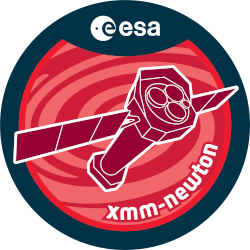

| Proposal ID | 092164 |
| Title | Arbitrating the nature of a supermassive black hole binary candidate with XMM |
| Download Data Associated to the proposal | https://nxsa.esac.esa.int/nxsa-sl/servlet/data-action-aio?obsno=0921640101 |
| DOI | https://doi.org/10.57780/esa-81duvag |
| Principal Investigator, PI | Dr Tingting Liu |
| Abstract | The local Seyfert 2 galaxy MCG+11-11-032 has been suggested as the possible hostof a sub-pc supermassive black hole binary (SMBHB) based on a tantalizing buttentative detection of a double-peaked Fe K line feature in its Swift-XRTspectrum. The observation of a double Fe line could be a powerful method forSMBHB detection and characterization, but because of the low SNR of the XRTdata, its nature requires confirmation. We propose to use the unique highsensitivity and spectral resolution of XMM at 6 keV to robustly examine thisfeature. This program could, for the first time, confirm an SMBHB through its FeK emission and pave the way for future studies which will have importantimplications for observing the electromagnetic signatures of SMBHBs in the gravitational-wave emitting regime. |
| Publications | No publications found for current proposal! |
| Instrument | EMOS1, EMOS2, EPN, OM, RGS1, RGS2 |
| Temporal Coverage | 2023-11-14T06:15:17Z/2024-05-02T12:35:37Z |
| Version | 21.23_20231215_1101 |
| Mission Description | The European Space Agencys (ESA) X-ray Multi-Mirror Mission (XMM-Newton) was launched by an Ariane 504 on December 10th 1999. XMM-Newton is ESAs second cornerstone of the Horizon 2000 Science Programme. It carries 3 high throughput X-ray telescopes with an unprecedented effective area, and an optical monitor, the first flown on a X-ray observatory. The large collecting area and ability to make long uninterrupted exposures provide highly sensitive observations. Since Earths atmosphere blocks out all X-rays, only a telescope in space can detect and study celestial X-ray sources. The XMM-Newton mission is helping scientists to solve a number of cosmic mysteries, ranging from the enigmatic black holes to the origins of the Universe itself. Observing time on XMM-Newton is being made available to the scientific community, applying for observational periods on a competitive basis. |
| Creator Contact | https://www.cosmos.esa.int/web/xmm-newton/xmm-newton-helpdesk |
| Date Published | 2025-05-30T00:00:00Z |
| Last Update | 2025-08-04 |
| Keywords | XMM-Newton, OM, RGS, EPIC, X-ray, Multi-Mirror, SAS |
| Publisher And Registrant | European Space Agency |
| Credit Guidelines | European Space Agency, Dr Tingting Liu, 2025, 'Arbitrating the nature of a supermassive black hole binary candidate with XMM', 21.23_20231215_1101, European Space Agency, https://doi.org/10.57780/esa-81duvag |